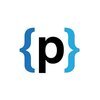


i
Filter interviews by
Coditas Technologies Software Developer Intern Interview Questions and Answers
9 Interview questions
SQL databases are structured and use a fixed schema, while NoSQL databases are unstructured and have a flexible schema.
SQL databases use structured query language for defining and manipulating the data.
NoSQL databases use various data models like key-value, document, columnar, or graph.
SQL databases are suitable for complex queries and transactions.
NoSQL databases are horizontally scalable and provide high perform...
C++ supports multiple inheritance while Java supports single inheritance.
C++ allows a class to inherit from multiple classes, while Java only allows a class to inherit from a single class.
In C++, a class can have multiple parent classes, resulting in a complex class hierarchy.
Java enforces single inheritance to avoid the diamond problem and maintain simplicity.
For example, in C++, a class can inherit from both a '...
div is a block-level element while span is an inline element in HTML.
div is used to group block-level elements and create sections on a webpage.
span is used to style inline elements or group text within a block-level element.
div elements create a line break before and after the element, while span does not.
The task is to add the consecutive numbers present in a given string.
Iterate through the string character by character
Check if the current character is a digit
If it is a digit, continue iterating until a non-digit character is encountered
Convert the consecutive digits into a number and add it to the sum
Repeat the process until all characters are processed
Return the sum
The choice of database depends on factors like data structure, scalability, performance, and query requirements.
Consider the data structure and relationships between entities.
Evaluate the scalability requirements of the task.
Analyze the performance needs, including read and write operations.
Assess the query requirements, such as complex joins or aggregations.
Examples: relational databases for structured data, NoSQ...
JDBC is a Java API for connecting and executing queries on a database.
JDBC stands for Java Database Connectivity.
It provides a set of classes and interfaces to interact with databases.
JDBC allows developers to write database-independent code.
It supports various database operations like connecting, querying, updating, and deleting data.
JDBC drivers are used to establish a connection between Java application and dat...
To add a link to your Linkedin account in a website by clicking on the logo, use the <a> tag with the href attribute set to your Linkedin profile URL.
Use the <a> tag with the href attribute set to your Linkedin profile URL
Insert the Linkedin logo image inside the <a> tag as the clickable element
Example: <a href='https://www.linkedin.com/in/yourprofile'><img src='linkedin_logo.png' alt='L...
Relational databases store data in tables with predefined relationships. Non-relational databases store data in flexible, schema-less formats.
Relational databases: MySQL, Oracle, SQL Server
Non-relational databases: MongoDB, Cassandra, Redis
Relational databases use structured query language (SQL) for data manipulation
Non-relational databases provide high scalability and flexibility
Relational databases are suitable ...
Types of databases include relational, NoSQL, object-oriented, and graph databases.
Relational databases store data in tables with predefined schemas, using SQL for querying (e.g. MySQL, Oracle)
NoSQL databases are schema-less and provide flexible data models (e.g. MongoDB, Cassandra)
Object-oriented databases store objects as they are, with support for inheritance and encapsulation (e.g. db4o)
Graph databases use nod...
Coditas Technologies Software Developer Intern Interview Experiences
2 interviews found
I applied via LinkedIn and was interviewed in Dec 2023. There were 2 interview rounds.
My topic was - "Do women make good managers?"
There was a google meet having a total of 20 people.
5 groups were made of 4 people each.
Each group were given different topic and every member was given 2 minutes to speak on the topic.
Good thing about this GD round was everyone was given chance to speak individually.
Finally I got selected in this round.
(9 Questions)
- Q1. Suppose you want to add the link to your Linkedin account in a website, and you have to do it by clicking on the logo of linkedin in the website, then how can you do it? Which HTML tag is used to do it?
- Ans.
To add a link to your Linkedin account in a website by clicking on the logo, use the <a> tag with the href attribute set to your Linkedin profile URL.
Use the <a> tag with the href attribute set to your Linkedin profile URL
Insert the Linkedin logo image inside the <a> tag as the clickable element
Example: <a href='https://www.linkedin.com/in/yourprofile'><img src='linkedin_logo.png' alt='Linked...
- Q2. Difference between div and span
- Ans.
div is a block-level element while span is an inline element in HTML.
div is used to group block-level elements and create sections on a webpage.
span is used to style inline elements or group text within a block-level element.
div elements create a line break before and after the element, while span does not.
- Q3. - What is JDBC in java? - What is JVM and the use of it? - We write "public static void main" in java.... will it work if we write "static public void main"? If yes, then why, what is the reason that it wo...
- Ans.
JDBC is a Java API for connecting and executing queries on a database.
JDBC stands for Java Database Connectivity.
It provides a set of classes and interfaces to interact with databases.
JDBC allows developers to write database-independent code.
It supports various database operations like connecting, querying, updating, and deleting data.
JDBC drivers are used to establish a connection between Java application and database...
- Q4. One major difference between OOPs concept of C++ and OOPs concept of java
- Ans.
C++ supports multiple inheritance while Java supports single inheritance.
C++ allows a class to inherit from multiple classes, while Java only allows a class to inherit from a single class.
In C++, a class can have multiple parent classes, resulting in a complex class hierarchy.
Java enforces single inheritance to avoid the diamond problem and maintain simplicity.
For example, in C++, a class can inherit from both a 'Vehic...
- Q5. Types of databases
- Ans.
Types of databases include relational, NoSQL, object-oriented, and graph databases.
Relational databases store data in tables with predefined schemas, using SQL for querying (e.g. MySQL, Oracle)
NoSQL databases are schema-less and provide flexible data models (e.g. MongoDB, Cassandra)
Object-oriented databases store objects as they are, with support for inheritance and encapsulation (e.g. db4o)
Graph databases use nodes an...
- Q6. Difference between SQL based database and NoSQL based databases
- Ans.
SQL databases are structured and use a fixed schema, while NoSQL databases are unstructured and have a flexible schema.
SQL databases use structured query language for defining and manipulating the data.
NoSQL databases use various data models like key-value, document, columnar, or graph.
SQL databases are suitable for complex queries and transactions.
NoSQL databases are horizontally scalable and provide high performance ...
- Q7. If you are given a task and you have to decide which type of database will be best for this task, then how will you decide that?
- Ans.
The choice of database depends on factors like data structure, scalability, performance, and query requirements.
Consider the data structure and relationships between entities.
Evaluate the scalability requirements of the task.
Analyze the performance needs, including read and write operations.
Assess the query requirements, such as complex joins or aggregations.
Examples: relational databases for structured data, NoSQL for...
- Q8. Examples of relational and non-relational databases
- Ans.
Relational databases store data in tables with predefined relationships. Non-relational databases store data in flexible, schema-less formats.
Relational databases: MySQL, Oracle, SQL Server
Non-relational databases: MongoDB, Cassandra, Redis
Relational databases use structured query language (SQL) for data manipulation
Non-relational databases provide high scalability and flexibility
Relational databases are suitable for c...
- Q9. Given a string = "as145egs14ghs2ghe7896", add the numbers present in the string, the consecutive numbers should be taken as a complete one number. i.e. you have to print the result of 145+14+2+7896 = ?
- Ans.
The task is to add the consecutive numbers present in a given string.
Iterate through the string character by character
Check if the current character is a digit
If it is a digit, continue iterating until a non-digit character is encountered
Convert the consecutive digits into a number and add it to the sum
Repeat the process until all characters are processed
Return the sum
Interview Preparation Tips
I got rejected in the first technical interview round only because I was not at all prepared for the interview. But if you have decent web development knowledge and basic DSA, then you can crack it.
Also, DO NOT put anything in your resume that you are not confident with.
Basic HTML, CSS, Javascript is very important.
Interviewer was friendly and was explaining me everything very nicely wherever I was wrong.
Skills evaluated in this interview
I applied via Campus Placement and was interviewed in May 2022. There were 4 interview rounds.
Aptitude was Easy level.
the apti paper had 60 questions in 60 minutes.
My topic was placement scenarios in India.
everyone was given 2-3 minutes to express their views.
(1 Question)
- Q1. This was T1 this was based on my resume and simple coding quetions
(1 Question)
- Q1. T2 this was the managerial Round they had given me Coding question of alphanumeric characters. and had asked around 10-15 questions on sql such as joins and ACID transaction
Interview Preparation Tips
Top trending discussions






Interview questions from similar companies

Software Developer Interview Questions & Answers
Solartis Technology Servicesposted on 18 May 2021
I applied via Walk-in and was interviewed before May 2020. There were 4 interview rounds.
Interview Questionnaire
1 Question
- Q1. For fresher 1 aptitude - percentage,date and time,number system,intrest,work done problems 2 Group discussion 3 HR interview
Interview Preparation Tips

I appeared for an interview before Sep 2020.
(2 Questions)
Round duration - 45 minutes
Round difficulty - Hard
Round was scheduled in the early afternoon hours most probably from 1 to 2 on hackerrank.
- Q1.
BST to Greater Tree Problem Statement
Given a binary search tree (BST) with 'N' nodes, the task is to convert it into a Greater Tree.
A Greater Tree is defined such that every node's value in the origina...
- Ans.
Convert a binary search tree into a Greater Tree by replacing each node's value with the sum of all values greater than or equal to it.
Traverse the BST in reverse inorder (right, root, left) to visit nodes in descending order.
Keep track of the running sum of visited nodes and update each node's value with this sum.
Recursively apply the above steps to all nodes in the BST.
Example: Input - 4 1 6 0 2 5 7 -1 -1 -1 3 -1 -1 ...
- Q2.
Ninja and Binary String Problem Statement
Ninja has a binary string
Sof sizeNgiven by his friend. The task is to determine if it's possible to sort the binary stringSin decreasing order by removing a... - Ans.
Determine if a binary string can be sorted in decreasing order by removing non-adjacent characters.
Check if the count of '1's in the string is equal to the length of the string, in which case it can be sorted in decreasing order.
If there are multiple '0's between two '1's, they can be removed to sort the string in decreasing order.
If there are more '0's than '1's, it is not possible to sort the string in decreasing ord...
(1 Question)
Round duration - 40 minutes
Round difficulty - Medium
This round was conducted on Code Share platform. I was shared the invitation link one day prior to the interview and also was told the name of my interviewer. I looked at the profile of the interviewer at linked.in and got a better understanding of what kind of person he was and prepared accordingly. The round was scheduled at 3 :00 pm on 25th August and I was eagerly waiting for the clock hands to reach 3 o'clock since morning and finally I went in front of him after wearing a white shirt and a black coat over it along with a tie over it.
- Q1.
Spiral Order Traversal of a Binary Tree
Given a binary tree with
Nnodes, your task is to output the Spiral Order traversal of the binary tree.Input:
The input consists of a single line containing elem... - Ans.
Implement a function to return the spiral order traversal of a binary tree given in level order.
Traverse the binary tree in a spiral order, alternating between left to right and right to left.
Use a queue to keep track of nodes at each level and a flag to switch direction.
Handle null nodes appropriately to maintain the spiral order traversal.
Example: Input: 1 2 3 -1 -1 4 5, Output: 1 3 2 4 5
Interview Preparation Tips
Tip 1 : Prepare DSA Questions from coding ninja or interview bit
Tip 2 : Have knowledge about SQL and datbases
Tip 3 : Practice Atleast 200 coding questions from gfg
Tip 1 : Attach links to coding profiles
Tip 2 : Mention short description of your team projects and individual as well
Skills evaluated in this interview

I appeared for an interview before Sep 2020.
(2 Questions)
Round duration - 45 minutes
Round difficulty - Hard
Timing (Between 6pm -7pm)
Environment was friendly and 2 coding questions were given.
- Q1.
Connecting Ropes with Minimum Cost
You are given 'N' ropes, each of varying lengths. The task is to connect all ropes into one single rope. The cost of connecting two ropes is the sum of their lengths. Yo...
- Ans.
Connect ropes with minimum cost by merging smallest ropes first.
Sort the lengths of ropes in ascending order.
Merge the two smallest ropes at a time to minimize cost.
Repeat the merging process until all ropes are connected.
Calculate the total cost by summing up the lengths of merged ropes.
Return the minimum cost obtained.
- Q2.
Optimize Memory Usage Problem Statement
Alex wants to maximize the use of 'K' memory spaces on his computer. He has 'N' different document downloads, each with unique memory usage, and 'M' computer games,...
- Ans.
Maximize memory usage by pairing downloads and games within memory limit 'K'.
Sort downloads and games in descending order.
Iterate through downloads and games to find the pair with maximum memory usage.
Return the indices of the selected download and game pairs.
(1 Question)
Round duration - 40 minutes
Round difficulty - Medium
Timing (6pm -7 pm)
Environment was user friendly
In first 10-15 minutes He asked my current company’s work and some behavioral questions. Then he jumped to coding problems
- Q1.
Spiral Order Traversal of a Binary Tree
Given a binary tree with
Nnodes, your task is to output the Spiral Order traversal of the binary tree.Input:
The input consists of a single line containing elem... - Ans.
Implement a function to output the Spiral Order traversal of a binary tree given in level order.
Traverse the binary tree in a spiral order, alternating between left to right and right to left at each level.
Use a queue to keep track of nodes at each level and a stack to reverse the order of nodes at odd levels.
Handle null nodes appropriately to maintain the spiral order traversal.
Example: Input: 1 2 3 -1 -1 4 5, Output:...
Interview Preparation Tips
Tip 1 : Prepare DSA Questions from coding ninja or interview bit
Tip 2 : Have knowledge about SQL and datbases
Tip 3 : Practice Atleast 200 coding questions from gfg
Tip 1 : Have some good projects Web Dev projects are preferred
Tip 2 : Resume should be of 1 page
Skills evaluated in this interview

Interview Questionnaire
1 Question
- Q1. Question on js
Interview Preparation Tips

I applied via Campus Placement

(1 Question)
- Q1. Qs related to javascript
(1 Question)
- Q1. Why should we hire you

I appeared for an interview before Feb 2023.
Sorting algo , array question
(1 Question)
- Q1. Oops dbms coding basics

I applied via Naukri.com and was interviewed before Jun 2023. There was 1 interview round.
(2 Questions)
- Q1. IAM & PAM Operations
- Q2. Related to Sailpoint
Interview Preparation Tips

Interview Questionnaire
2 Questions
- Q1. Interview happened for about 1hr 20mins approx with java basics to hard question like Singleton class, HashMap, oops concept and sql queries and they gave 3 code to write.
- Q2. Be relax answer with confidence
Coditas Technologies Interview FAQs
Some of the top questions asked at the Coditas Technologies Software Developer Intern interview -
Tell us how to improve this page.
Coditas Technologies Interviews By Designations
- Coditas Technologies Software Engineer Interview Questions
- Coditas Technologies Associate Software Engineer Interview Questions
- Coditas Technologies Software Developer Interview Questions
- Coditas Technologies Intern Interview Questions
- Coditas Technologies Devops Engineer Interview Questions
- Coditas Technologies Senior Business Analyst Interview Questions
- Coditas Technologies Senior Software Engineer Interview Questions
- Coditas Technologies Software Trainee Interview Questions
- Show more
Interview Questions for Popular Designations
- Software Developer Interview Questions
- Software Engineer Interview Questions
- Java Developer Interview Questions
- Front end Developer Interview Questions
- Web Developer Interview Questions
- Senior Software Developer Interview Questions
- Salesforce Developer Interview Questions
- Software Development Engineer Interview Questions
- Show more
Overall Interview Experience Rating
based on 1 interview experience
Difficulty level
Duration
Interview Questions from Similar Companies
Coditas Technologies Software Developer Intern Reviews and Ratings
based on 1 review
Rating in categories
|
Software Engineer
343
salaries
| ₹6 L/yr - ₹13 L/yr |
|
Associate Software Engineer
160
salaries
| ₹3.5 L/yr - ₹7.2 L/yr |
|
Software Developer
143
salaries
| ₹4.6 L/yr - ₹17 L/yr |
|
Senior Software Engineer
129
salaries
| ₹11.1 L/yr - ₹40 L/yr |
|
QA Engineer
60
salaries
| ₹3 L/yr - ₹11.5 L/yr |

Mobile Programming

Diverse Lynx

Arcesium

Solartis Technology Services
- Home >
- Interviews >
- Coditas Technologies Interview Questions








